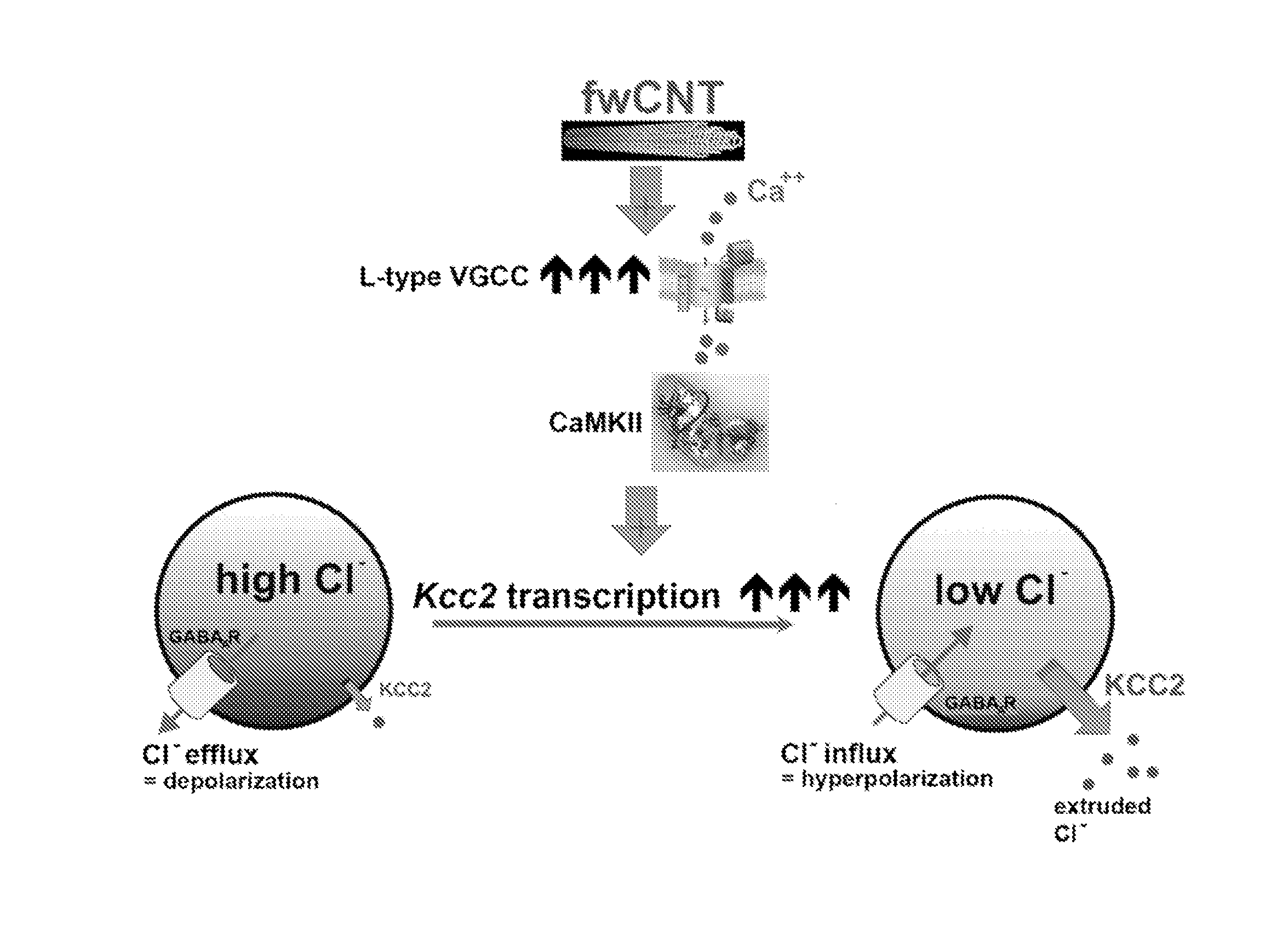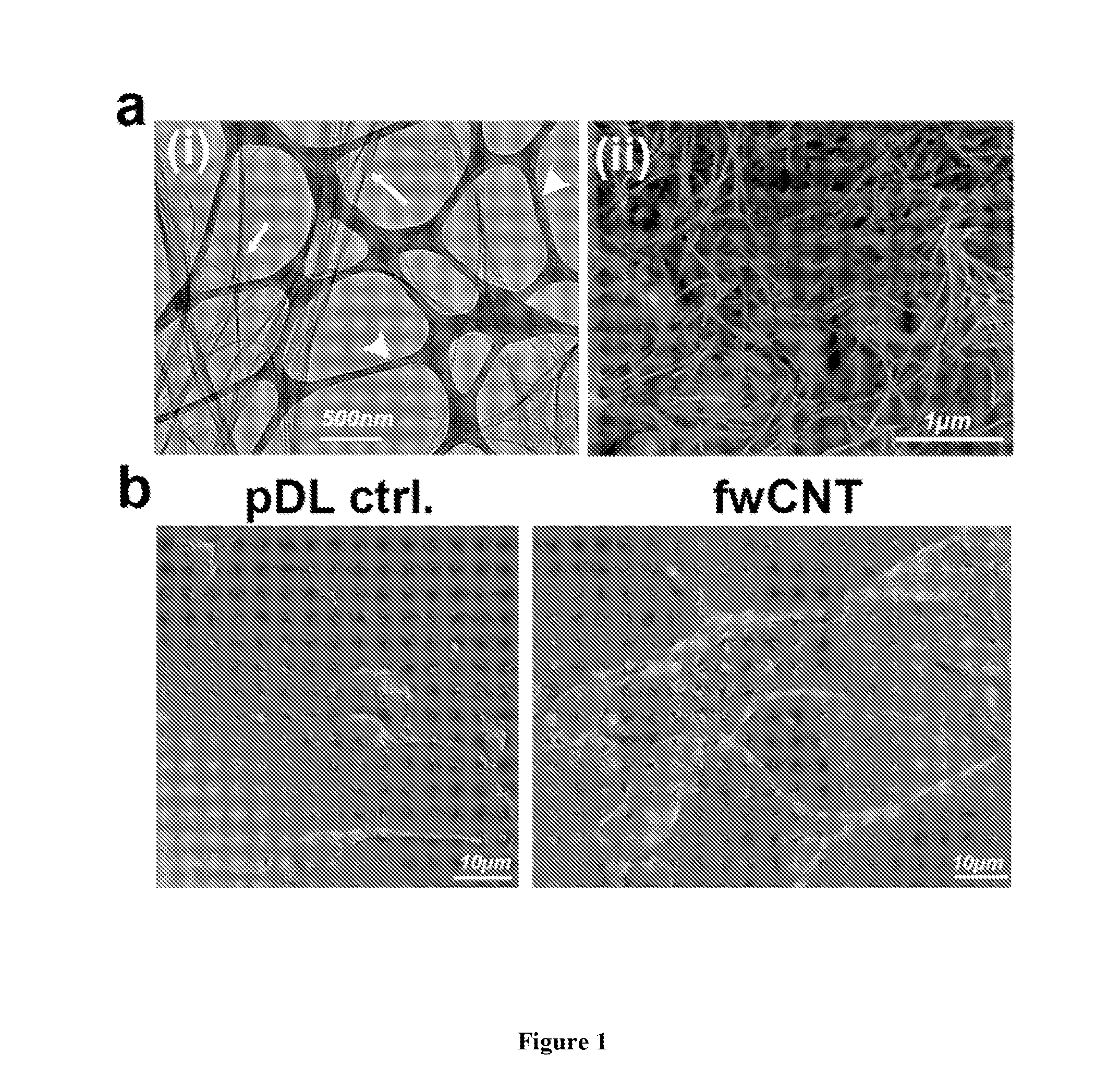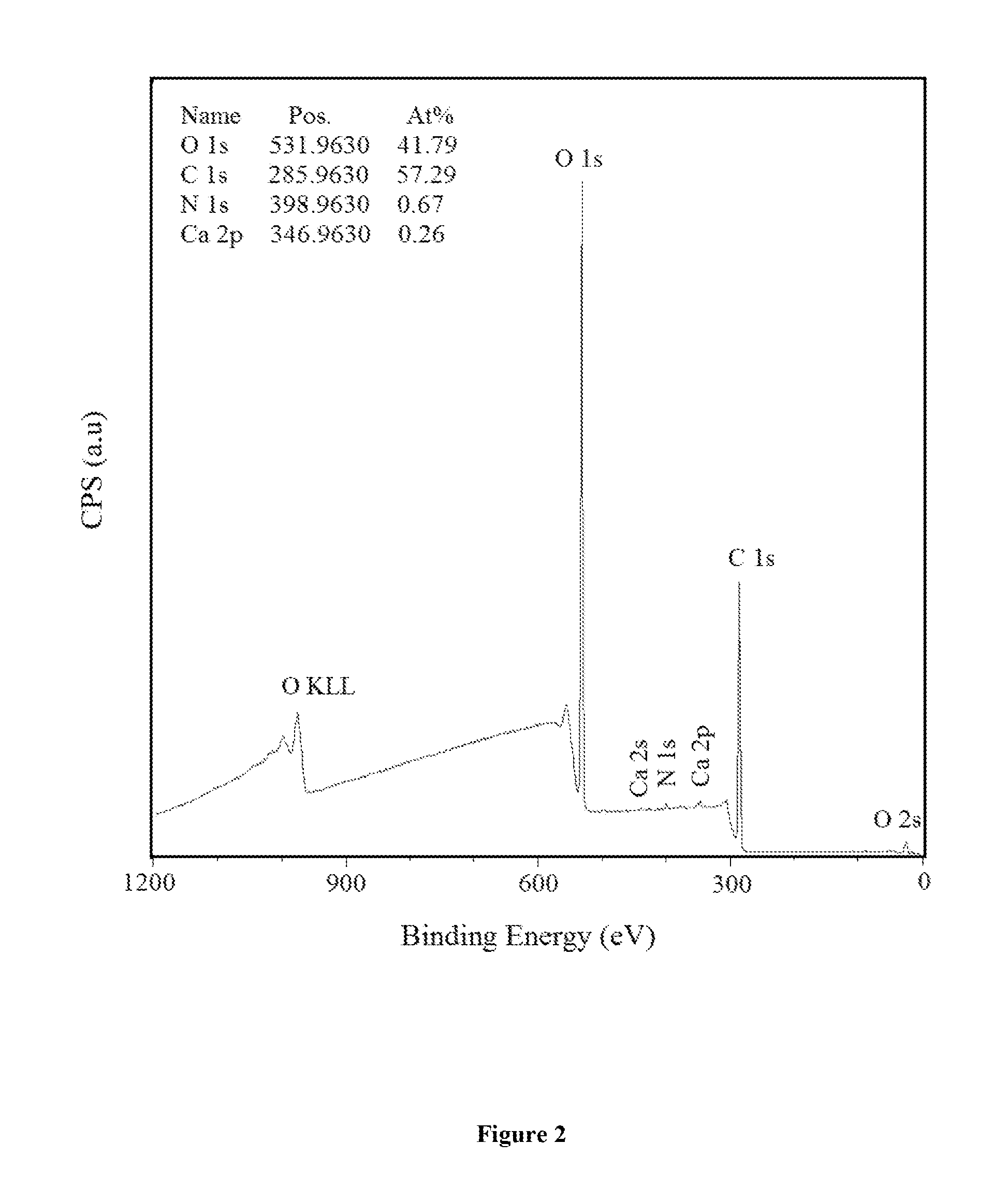Carbon Nanotubes And Methods Of Use
a technology of carbon nanotubes and carbon nanotubes, applied in the direction of non-metal conductors, prostheses, conductors, etc., can solve the problems of remaining elusive, and achieve the effect of increasing the expression of kcc2
- Summary
- Abstract
- Description
- Claims
- Application Information
AI Technical Summary
Benefits of technology
Problems solved by technology
Method used
Image
Examples
example 1
Growth of Carbon Nanotubes and Silicon Oxide Nanowires (SiOx)
[0050]To determine whether exposing primary CNS neurons to CNT matrices could alter their gene expression so that their cell- and network physiological properties could be enhanced, neuronal chloride regulation in response to CNT matrix was assessed using few-walled CNT (fwCNT). FwCNT have simplified synthesis protocols and exceptional purity as compared to single-walled CNT. Feng, Y. et al. (2008) ACS Nano 2:1634-1638; Hou, Y. et al. (2009) ACS Nano 3:1057-1062; Qi, H., Qian, C., Liu, J. (2006) Chemistry of Materials 18:5691-5695; Qian, C. et al. (2006) J. Nanosci Nanotechnol 6:1346-1349. FwCNT are also favorable to multi-walled CN because fwCNT have lower defect density and higher electric conductivity.
[0051]Growth of Carbon Nanotubes and Silicon Oxide Nanowires (SiOx):
[0052]Few-walled carbon nanotubes (fwCNTs) were grown using a catalytic chemical vapor deposition (CVD) method. Co / Mo catalyst supported on porous MgO pow...
example 2
Chloride Shift in Rat Primary Cortical Neurons
[0061]To determine whether the chloride shift in rat primary cortical neurons was accelerated, directed expression of a genetically-encoded chloride indicator, Clomeleon, was used to detect reduction of neuronal chloride.
[0062]Cortical Neuron Culture.
[0063]The preparation of primary cortical neurons was adapted from a previous protocol. Yeo, M. et al. (2009) J. Neurosci 29:14652-14662. Briefly, cortices were microdissected from embryonic rats (E18) or mice (E16.5). Rats provide an appropriate animal model and studies performed with rat primary neurons are representative and suggestive of results for human neurons.
[0064]The tissue was dissociated using papain, followed by mechanical dissociation. Cytosine arabinoside (2.5 μM) was added to cultures to inhibit the proliferation of non-neuronal cells. Cell suspension was plated at a density of 106 cells mL−1 onto tissue-culture dishes. 12 mm-diameter matrix-covered glass coverslips were cont...
example 3
Signaling Mechanisms of the Neuronal Chloride Shift and Upregulation of Kcc2
[0075]To determine whether L-type voltage-gated calcium channels (VGCC) are involved in the chloride shift (Ganguly, K. et al. (2001) Cell 105:521-532; Yeo, M. et al. (2009) J. Neurosci 29:14652-14662) their functional expression was verified using a fluorescently-labeled compound that directly binds to VGCC, bodipy-DM-dihydropyridine.
[0076]VGCC Receptor Binding Studies.
[0077]Fluorescence imaging of dihydropyridine binding to L-type VGCC was conducted following previous reference. Schild, D., Geiling, H., Bischofberger, J. (1995) J Neurosci Methods 59:183-190. Briefly, 1 μM Bodipy-DM-DHP (Invitrogen, Carlsbad, United States) was applied to primary cortical neuronal cultures on for 1 h (37° C.), cells were washed and fixed in 4% paraformaldehyde for 20 min, mounted on glass-slides using fluoromount, and imaged, using either green- or red filter settings. Quantitative assessment was conducted following previou...
PUM
| Property | Measurement | Unit |
|---|---|---|
| intrinsic electrical conductivity | aaaaa | aaaaa |
| intrinsic electrical conductivity | aaaaa | aaaaa |
| intrinsic electrical conductivity | aaaaa | aaaaa |
Abstract
Description
Claims
Application Information
 Login to View More
Login to View More - R&D
- Intellectual Property
- Life Sciences
- Materials
- Tech Scout
- Unparalleled Data Quality
- Higher Quality Content
- 60% Fewer Hallucinations
Browse by: Latest US Patents, China's latest patents, Technical Efficacy Thesaurus, Application Domain, Technology Topic, Popular Technical Reports.
© 2025 PatSnap. All rights reserved.Legal|Privacy policy|Modern Slavery Act Transparency Statement|Sitemap|About US| Contact US: help@patsnap.com



